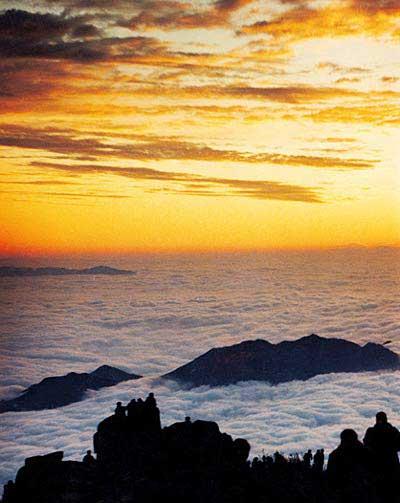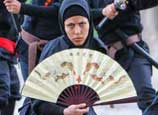
 |
| Mount Taishan(CNTV) |
Since ancient times, the Chinese people have been worshipping Mount Taishan, with sayings such as, "If Mount Taishan is at peace, then the entire world is at peace." According to legends, 72 emperors had visited Mount Taishan for hunting and performing sacrifices. Qin Shi Huang, the first emperor of the Qin Dynasty, had been caught in rain when he climbed the mountain, and found shelter under a pine tree, which was later named the Wudafu Pine. Emperor Wu of the Han Dynasty had climbed Mount Taishan eight times and exclaimed it as "tall, deep, spectacular and celebrated." Many emperors in ancient times had made sacrifices to heaven and earth on Mount Taishan, built temples and inscriptions on stone tablets. The ancient literati admired the mountain enormously and wrote many poems and articles during or after their visits there. The mountain has more than 20 ancient buildings and over 2,200 inscribed stone tablets.
Mount Taishan is famous for its magnificent scenery. The peaks over peaks, pines and rocks, as well as the changes of the clouds all make it look imposing but bright and beautiful, and solemn but magical.
The sunrise is just one of the marvelous spectacles on Mount Taishan and also an important symbol of the mountain. Every morning or evening the peak in coved in a thick mist, so when standing at the top of the mountain, tourists can see a colorful halo with a blue inner ring and a red outer ring on the ethereal vesture of the mist. The colorful halo will shine down upon the tourists or only their heads, looking like the halo on the head of a Buddha figure. Therefore, the colorful halo is called "the halo of Buddha" or "the halo of God." The "halo of Buddha" on Mount Taishan is a light diffraction phenomenon, and its appearance is conditional. According to records, the "halo of Buddha" mostly appears in half sunshine and half fog between June and August every year and when the sunlight slants.
Mount Taishan is also world-famous for its numerous stone inscriptions, among which, some were inscribed by emperors and some by distinguished people. These inscriptions were mostly elegantly worded and elaborately produced. There are currently 1,696 stone inscriptions on Mount Taishan, inscribed on cliffs and on stone tablets. They are not only important data recordings about the history of Mount Taishan, but also one of the wonderful scenery.


















 Wild Siberian tiger kills cattle in NE China
Wild Siberian tiger kills cattle in NE China


![]()
